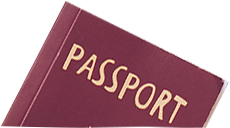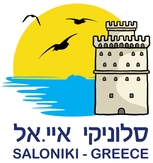By Avi Azulay
To tell you the truth? There aren’t enough words in the English dictionary, and I assume the same holds for any other human language, that can adequately describe the way a city like Thessaloniki works its magic on all the senses, how it awakens and stimulates the mind, body and heart. Already on my first visit to the city I could feel it not only touching my heart, but sinking deep into it, leaving a wonderful, profound impression.
It doesn’t really matter how many times you’ve visited Thessaloniki. Even if you’ve lived in the city for some time, something new is always waiting to be discovered, making you fall in love with it time and time again. Even though I haven’t any Greek roots, this special town – a combination of European flavor with a Mediterranean climate and beat – has completely won me over. If you’re planning a visit to the capital of Greek Macedonia, which is also the central city of northern Greece, I’m happy to present you with a short guide of the top places to visit, including the essential must-sees of Thessaloniki.
But first things first! Before you visit Thessaloniki, it is inevitable to take a brief history class on the second largest city in Greece (after Athens).
Many Jewish people who visit the city experience a special feeling, different from what you experience in Athens or in the popular Greek islands. Those feelings coincide with the history of the Jewish community in Greece. Indeed, the Jewish-Greek-Thessalonikian community survived through three of the largest disasters of the Jewish people. First, the destruction of the Second Temple by the Romans, after which the community in Thessaloniki embraced Judean refugees; Second, the Alhambra Decree which forced Jews out of the Spanish empire, and many of them found themselves in Thessaloniki; Third, the Holocaust, which was the most devastating event for the Greek community.
The fire that engulfed the city in 1917 destroyed buildings and property, the Nazi fire destroyed human life. 96 percent of the community perished. Most of the 4% survivors live in Israel today. They remember Thessaloniki with a great love and keep their memories close to the heart. The speak of the city with passion, they write about it, they remember it as a great cultural center but also as a private memory. They can’t stop missing it.
A lot can be said about the connection between Judaism and Thessaloniki. This town, that was once called “Madre de Israel”, was immensely meaningful to the cultural and spiritual life of Jews across Europe and the Balkan.
The history of Thessaloniki’s Jews is an important chapter which ended in a great disaster, but also plays an important role in the history of the city itself. Prior to the Second World War, 60,000 Jews were living in Thessaloniki – more than half of the city’s population. Back then, Thessaloniki had such a strong Jewish presence, that even non-Jewish residents spoke Ladino, the Judeo-Spanish dialect. Most of the city’s businesses were closed on Saturdays and Jewish holidays, including the city’s central port.
Until the beginning of the 20th century, Thessaloniki was a cosmopolitan city, a rich cultural center, but a chain of disasters that began in that time slowly saw the city’s downfall. Nowadays, only 1,500 Jews live in Thessaloniki. The social life of the community is run by a few community leaders which view the commemoration of the town’s history, as well as preserving its synagogues, as an important goal. Still, it remains a small community with a limited influence of the city in general.
The history of Thessaloniki’s Jews is an important chapter which ended in a great disaster, but also plays an important role in the history of the city itself. Prior to the Second World War, 60,000 Jews were living in Thessaloniki – more than half of the city’s population. Back then, Thessaloniki had such a strong Jewish presence, that even non-Jewish residents spoke Ladino, the Judeo-Spanish dialect. Most of the city’s businesses were closed on Saturdays and Jewish holidays, including the city’s central port.
Until the beginning of the 20th century, Thessaloniki was a cosmopolitan city, a rich cultural center, but a chain of disasters that began in that time slowly saw the city’s downfall. Nowadays, only 1,500 Jews live in Thessaloniki. The social life of the community is run by a few community leaders which view the commemoration of the town’s history, as well as preserving its synagogues, as an important goal. Still, it remains a small community with a limited influence of the city in general.
I usually start my mornings in Thessaloniki with a cup of Frappe – the traditional foamy iced coffee. In the mornings, you might sense that you’re in a sleepy town, but very soon you find out that Thessaloniki is very western, with a combination of old and new, classical and modern, and full of young people and students who like to spend their time in the city’s many taverns and cultural centers.
Like many other European cities, Thessaloniki has its own Hop On-Hop Off bus. This two-tiered bus drives a 45 minutes tour around the city’s main sights, with 8 stops in important cathedrals, archaeological sites, markets and lookouts.
You may get off at any time and catch another bus every 30 minutes. The bus also reaches the highest point in town, where you can catch an amazing view of the entire city and the bay. If you’re in town for a quick visit, this bus might be a good option for you.
The first stop is the White Tower, where you can also buy tickets for the bus (10€ per ticket). Starting your visit with a bus tour gives you a wider image of the city, allowing you to plan the rest of your stay better.
The Thessaloniki Seafront Promenade on Nikis street spreads along the city’s beach line and is 7 kilometres long.
It is a local and tourist favorite for a pleasant stroll in the early evenings, or enjoying a seafood dinner with Ouzo and some sea breeze in the Tavernas along the promenade. On the way there or back you may stop in ‘The Chocolate Factory’ (the smell will draw you in anyway), where you can find chocolate delights in any color and flavor.
Moments after the sun sets, the Tavernas on Nikis street start playing Greek music, preparing the atmosphere for the live Rebetiko shows and the long night after.
Two of the city’s landmarks are visible from the promenade. The White Tower is a medieval rotunda which became the town’s symbol. During the Ottoman conquest it served as a jail and many prisoners were executed in its grounds, ‘awarding’ it with the nickname ‘the blood tower’.
After the liberation of Greece from ottoman rule and Greece’s declaration of independence, the tower was painted white as a symbol of freedom. Today the tower is no longer white. The paint was removed but the name remains. 100 steps will lead you to the roof of the tower, where you can overlook the wonderful bay and the surrounding area. The tower also serves as a museum for Byzantine culture, with interactive exhibitions about the city’s history from ancient times up until today. Definitely worth a visit.
Not far from there stands the statue of Alexander III of Macedon, also known as Alexander the Great, riding his horse in front of the sea. This is the man who established his great empire from this very place, a small village just near Thessaloniki.
The monument is a 20m bronze statue, placed in 1974. This impressive landmark depicts the world’s greatest Macedonian, in a city that is named after his sister.
In Eleftherias (“liberty”) square, also called ‘Jewish Martyrs square’, stand a notable monument in memory of Thessaloniki Jews who were murdered in the Holocaust.
get on board of one of the Pirate Ships in the White Tower/promenade are. The boat tour takes 1 hour, you sail around the bay and in Thessaloniki port, accompanied with Greek music. A great way to end a day of walking around the city, catch the afternoon breeze and look at the beautiful promenade from sea.
The sail is free of charge, but it is customary to purchase a drink or a snack in the boat’s cafeteria for a reasonable price.
What to see?
Walking along the promenade, you will most likely end up in Aristotelous Square, which is the main axis crossing the city from north to south. This square is the beating heart of the town, and you can tell by the impressing buildings and luxury hotels encompassing it. It is one of the biggest and extraordinary squares in Greece. It is surrounded with palaces, cafes and different activities. It is of historical importance as well – over the years many important political events were given here, and of course huge rallies and cultural events that are still taking place.
Tsimiski St. is one of Thessaloniki’s three main streets, between Egantia st. and Ermou st., which all cross Aristotelous square. It is the main shopping street, where you can find all the major European labels alongside local, often cheaper, brands.
Perhaps the best place to spend the first (and every) evening in Thessaloniki is Ladadika District. In this beautiful historical area you will find colorful buildings, enchanting sounds, scents and flavors. The district is packed with tavernas, bars, clubs and people. Most of the tavernas host live music shows that go on until late in the night and even early dawn. Ladadika streets are uniquely charmful and attract locals and tourists from all over. Traditional Bouzouki clubs, sirtaki dancing and Rebetiko music go hand in hand with the traditional seafood dishes, souvlaki stalls, Mezzes and Ouzo. The tables serve food and drink and afterwards become a dancefloor for a night that you will not soon forget.
What to eat and drink?
In Ladadika District, you should visit Palati – a favorite Taverna in Thessaloniki. It became famous for its excellent food, and live music by owner/singer Christos. Another highly recommended restaurant near Ladadika is Rouga, an authentic Greek restaurant with a nostalgic atmosphere. Two house musicians, on the Bouzouki and the guitar, play lovely music that’s not too over empowering on the mood. The fried zucchini is great, so is the Dolmedes (stuffed vine leaves) and the grilled fish. Everything is fresh and lovely.
At the end of Ladadika District, on Nikis street, in an easy-to-miss corner you will find a charming little taverna called Momo Meze Bar. This place is definitely worth finding. The vibe is special, the music is great, and the guests are always joining in on the singing and dancing. It’s a favorite local spot as well. Momo’s is open until 2 AM, the food is yummy, and the owner is nice. A fun way to spend the evening! Sundays and Mondays are without live music, so it’s best to come on other days of the week.
The Market
The perception of Thessaloniki as a quiet, serene town is felt in different part of the city, but not in its markets! A whole new side of Thessaloniki comes out once you make a visit to a real Greek market. Don’t miss out on one of the biggest markets, Modiano Market, which combines the Greek character with the European style. Fresh fish right from the fishermen’s net, olive stands, wonderful cheeses and original Greek coffee and pastries. An experience for all the senses. Here you can smell and taste Thessaloniki itself, but also the rest of the Macedonia and Northern Greece specialties. The market is covered with a glass dome which lets the natural sun in, and its allies are sometimes connected to the streets outside.
This is an old market that preserved its authenticity, and you can enjoy local, fresh street food while you shop for food and other delights. This market is also an important part of the Jewish story of the city. When the Jewish community was at its peak, this market belonged to a Jewish family named Modiano. The planner of the market was Elie Modiano, the son of a rich bankers family.
Don’t miss the chance to get in direct contact with the local. Everyone here is polite and love to help tourists.
The jewish connection
Not far from there you will find the Jewish History Museum, which presents the history and legacy of the city’s Jewish community during its golden age. The museum is fairly small with only two floors. You can see tombstones and burial pillars from the Jewish cemetery, photographs and documents telling the story of an important and interesting community. All of the Jewish-related sights are a walking distance from the museum.
Yad Hazikaron Synagogue, one of three synagogues in the city, is not far from the museum as well. Prayers are held every day, and on one of the walls you will find an inscription of the names of 73 synagogues that were operating in the city for hundreds of years, before being destroyed in the Holocaust.
Ano police, uptown, photo: Svyatoslav Khimin, Flicker
Don’t skip another interesting walking route from the Uptown Ano Police to downtown. You start by climbing the ruins of the old city walls – “Thessaloniki’s Balcony” – for a breathtaking view of the entire town. Afterwards, you start descending in a route that passes through narrow, stone-cobbled alleyways, between old houses, some of which are restored and renovated. Some of the houses are uniquely decorated thanks to the many artists who live in this area.
Helkidiki
Like many other visitors to Thessaloniki, you can end your stay in a dreamy getaway to Halkidiki, an 1:15 hour drive from the city, where you can enjoy beautiful beaches, nature and landscapes. This area is nicknamed ‘the Greek Riviera’ for a reason. It comprises of three land strips, which are actually three peninsulas in the Aegean Sea. The Greek say that Halkidiki looks like Poseidon’s pitchfork.
They say home is where the heart is. Thessaloniki is a city that can easily feel like home.
For Jews, coming to a house of a Jewish family on a Friday night makes you feel like a part of one big family.
Many people call see it as the Greek version of Jerusalem (and many people indeed nickname it ‘the Balkan Jerusalem’), but if you know where to go and what to do, what are the important historical landmarks, the mythological buildings, the best live music shows, the best cafes and bakeries, and the best places to go out at night – you can return from your visit with larger-than-life experiences from a developing city with a great potential.
The personal bottom line
in every visit to Thessaloniki I can feel new corners of my heart expanding, being filled with all the goodness and beauty this city has to offer. Thessaloniki feels right at home within me, and I feel right at home in it.
Avi Azoulai, the former spokesperson of the city of Beit She’an, a senior communications advisor, is highly involved with the Jewish community of Thessaloniki, and is working on a number of projects to strengthen the connection between Thessaloniki and Israel.
החזקות שלנו

אוכל כשר בטיולים מאורגנים

מדריך דובר עברית

עדכונים שוטפים ללא עלות

הסעות וטיולים פרטיים









